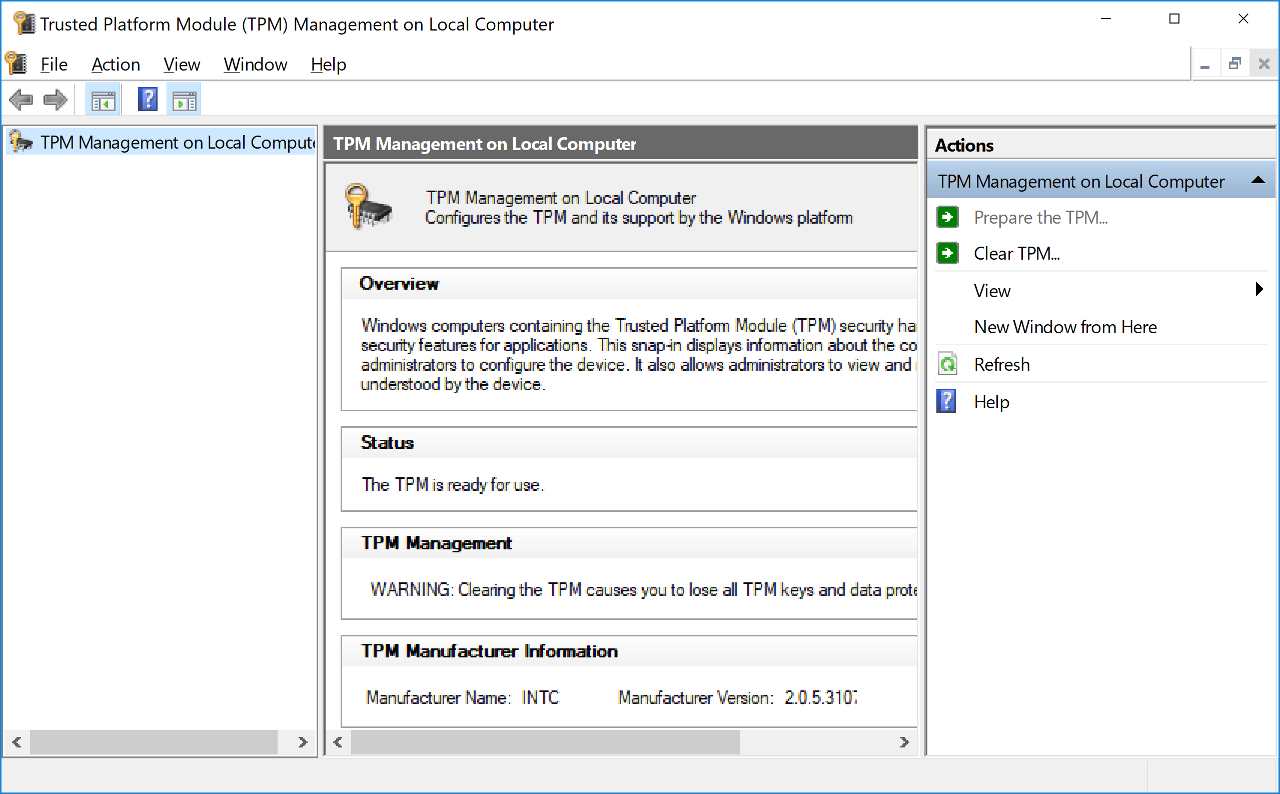
Download 'Bypass Secure Boot and Trusted Platform Module' and extract the three files. Double-click on: 'Bypass TPM And Secure Boot.reg' or 'Windows 11 - Bypass TPM And Secure Boot DEFAULT.' Click Yes when prompted by User Account Control. Click Yes when prompted by Registry Editor. Click OK when prompted by the Registry Editor.

- Trusted Platform Module (TPM) driver for Windows 8 (32-bit, 64-bit) and Windows 7 (32-bit, 64-bit) - Desktops, Notebooks (Windows 8 and 7 Inbox driver).
- Systems that shipped with Windows 7 from the factory will have TPM 1.2. These systems will need the Dell TPM 2.0 Update Utility from the Dell Support Website, to upgrade the TPM to firmware version 2.0. Drivers and downloads Category: Security Dell TPM 2.0 Firmware Update Utility.
- Now with Windows 10 Anniversary Edition aka Redstone, support for the Trusted Platform Module has become mandatory and will be enabled by default, meaning we should see a slow phasing out of devices vulnerable to rootkits and other malware which compromise computers at that level.
- Yesterday upgraded OS of my laptop to Windows 10 1607. Got message in Device Manager: Trusted Platform Module 2.0 This device cannot start (Code 10).

Applies to
- Windows 10
- Windows 11
- Windows Server 2016 and above
Trusted Platform Module 2.0 Driver Windows 10 Download Free
Trusted Platform Module (TPM) technology is designed to provide hardware-based, security-related functions. A TPM chip is a secure crypto-processor that helps you with actions such as generating, storing, and limiting the use of cryptographic keys. The following topics provide details.
Windows 10 Download
| Topic | Description |
|---|---|
| Trusted Platform Module Overview | Provides an overview of the Trusted Platform Module (TPM) and how Windows uses it for access control and authentication. |
| TPM fundamentals | Provides background about how a TPM can work with cryptographic keys. Also describes technologies that work with the TPM, such as TPM-based virtual smart cards. |
| TPM Group Policy settings | Describes TPM services that can be controlled centrally by using Group Policy settings. |
| Back up the TPM recovery information to AD DS | For Windows 10, version 1511 and Windows 10, version 1507 only, describes how to back up a computer’s TPM information to Active Directory Domain Services. |
| Troubleshoot the TPM | Describes actions you can take through the TPM snap-in, TPM.msc: view TPM status, troubleshoot TPM initialization, and clear keys from the TPM. Also, for TPM 1.2 and Windows 10, version 1507 or 1511, or Windows 11, describes how to turn the TPM on or off. |
| Understanding PCR banks on TPM 2.0 devices | Provides background about what happens when you switch PCR banks on TPM 2.0 devices. |
| TPM recommendations | Discusses aspects of TPMs such as the difference between TPM 1.2 and 2.0, and the Windows features for which a TPM is required or recommended. |